" Python Data Mining Introduction and Practice" , fully release Python 's data analysis capabilities, master the core technologies of the big data era, easily get started with data mining technology and apply it to practical projects
.
To buy original foreign language books and reference books, please visit the website of foreign language original books and reference books (bookstore). To study abroad, take foreign language exams, and purchase foreign language teaching materials, please come to the Foreign Language Original Books and Reference Books website (bookstore), and search for "foreign language original books and reference books" on Baidu or Google. You can also find the following two-dimensional Enter the code into the WeChat store or APP to purchase.
When you master a foreign language, you are exposed to a new culture and have a new mindset.




" Python Data Mining Introduction and Practice" , introduces the basic knowledge, basic tools and practical methods of data mining, and takes you on the journey of data mining easily by explaining the algorithm step by step. Using a combination of theory and practice, this book presents how to use decision trees and * forest algorithms to predict the results of NBA games, how to use affinity analysis to recommend movies, and how to use Naive Bayes for social media mining. ,and many more. The book also covers neural networks, deep learning, big data processing, and more. This book is for programmers willing to learn and experiment with data mining.
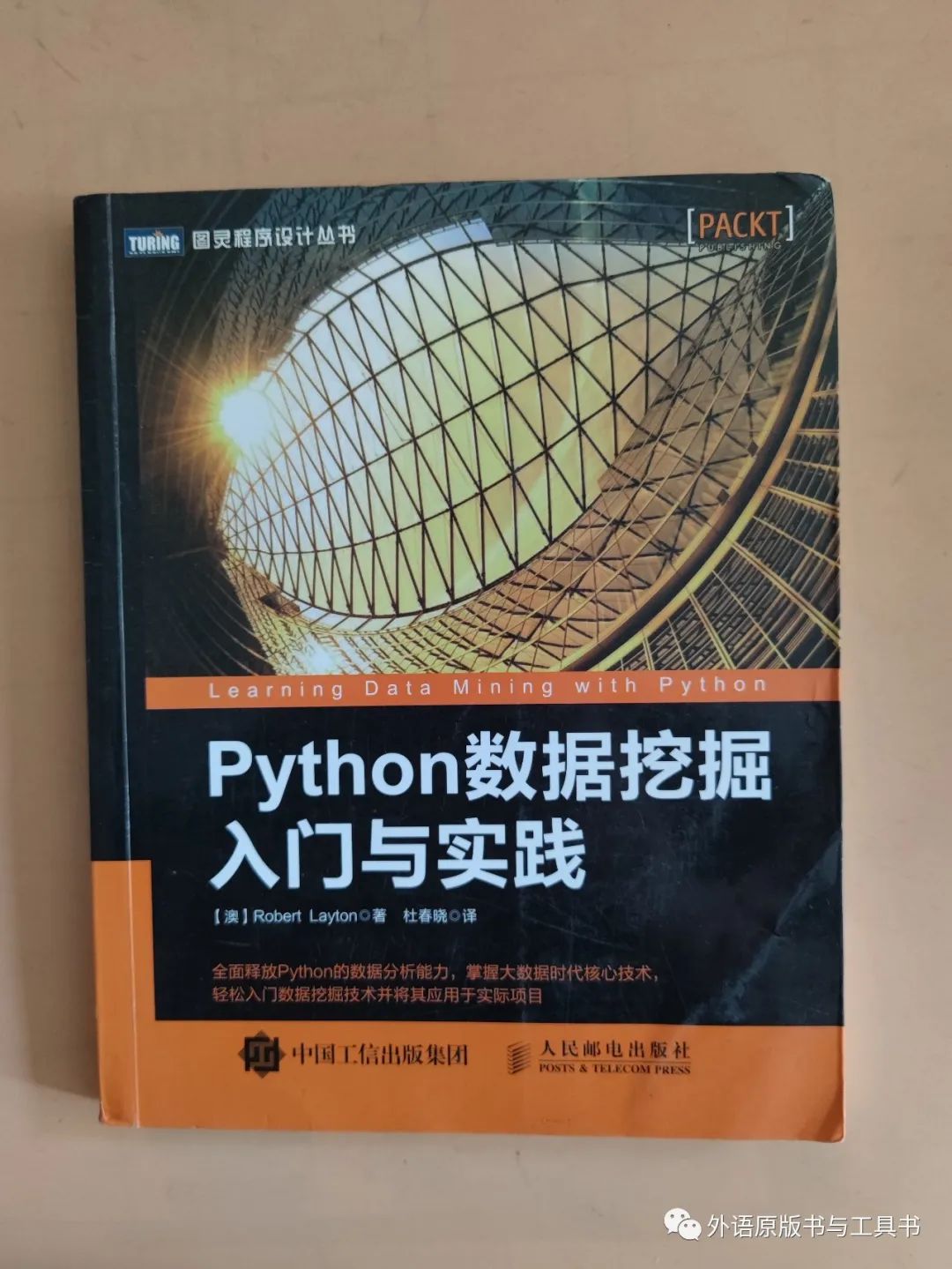
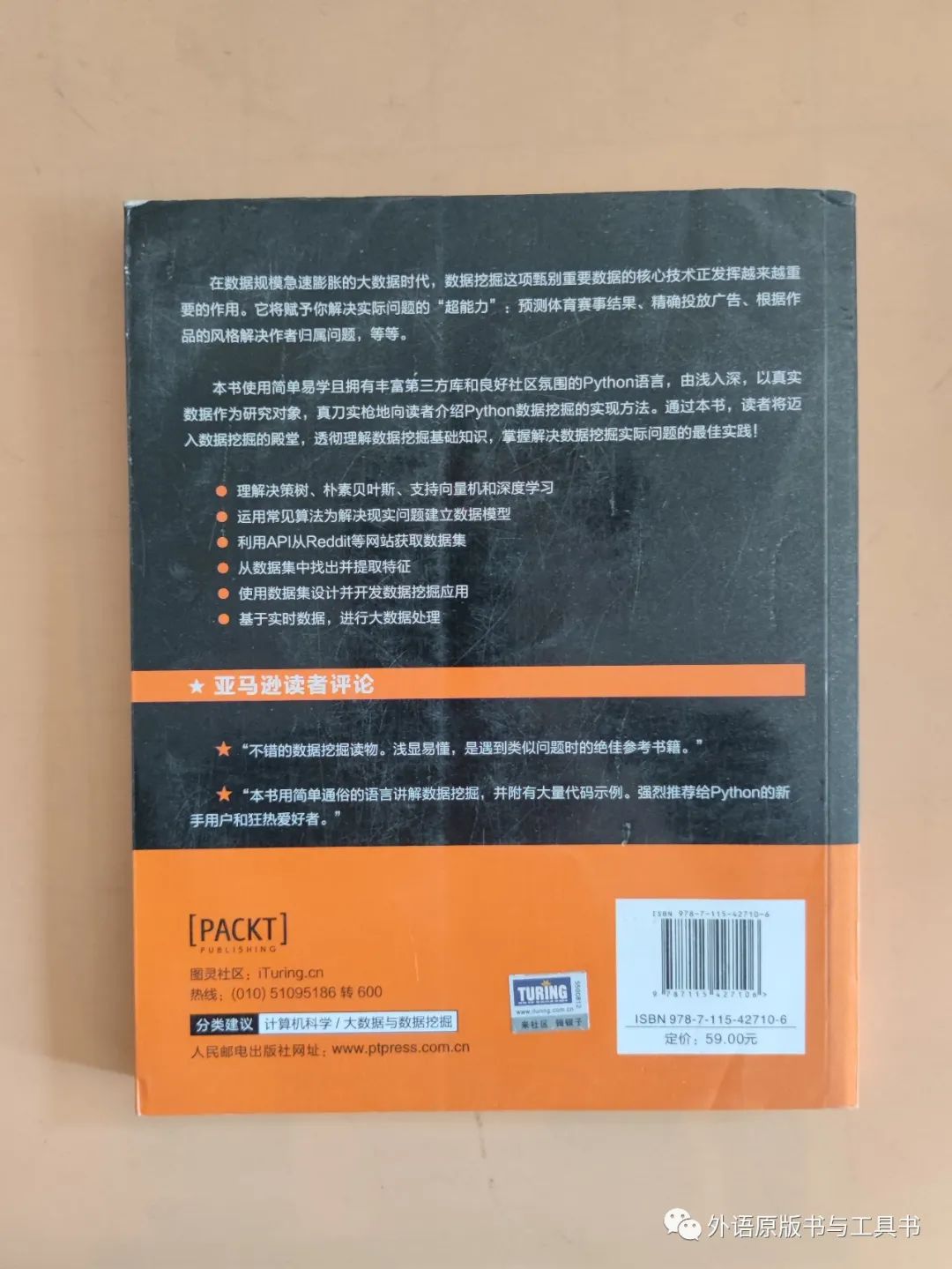

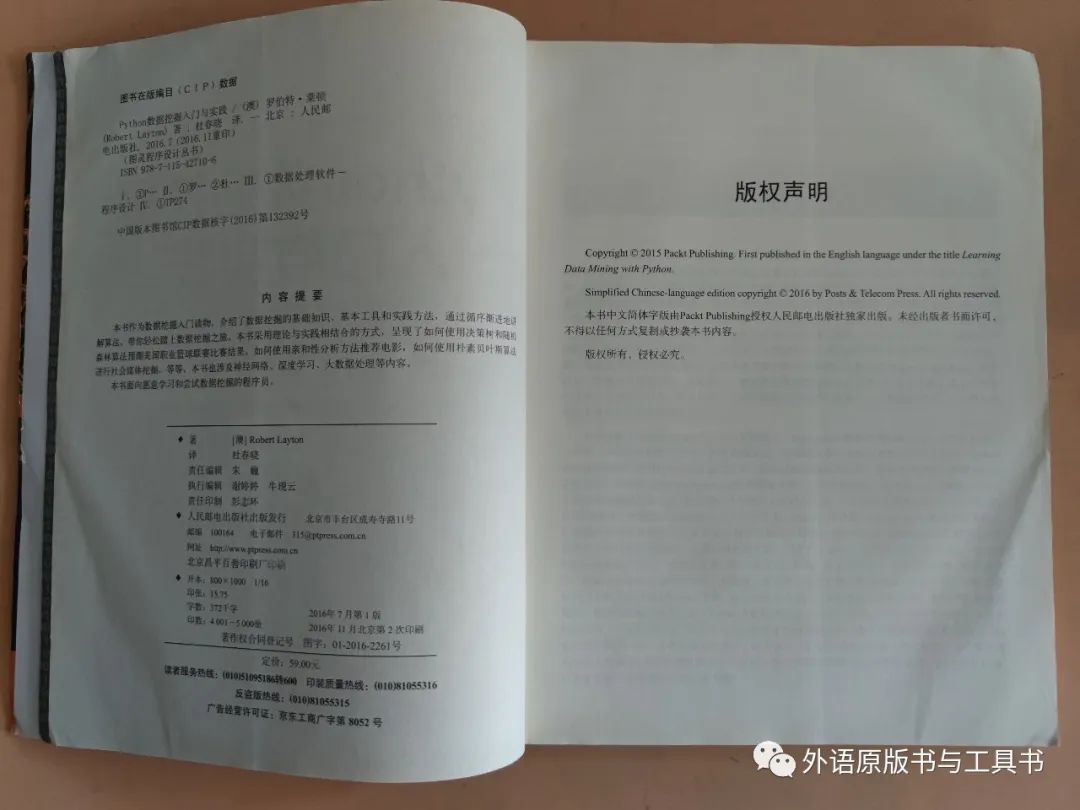
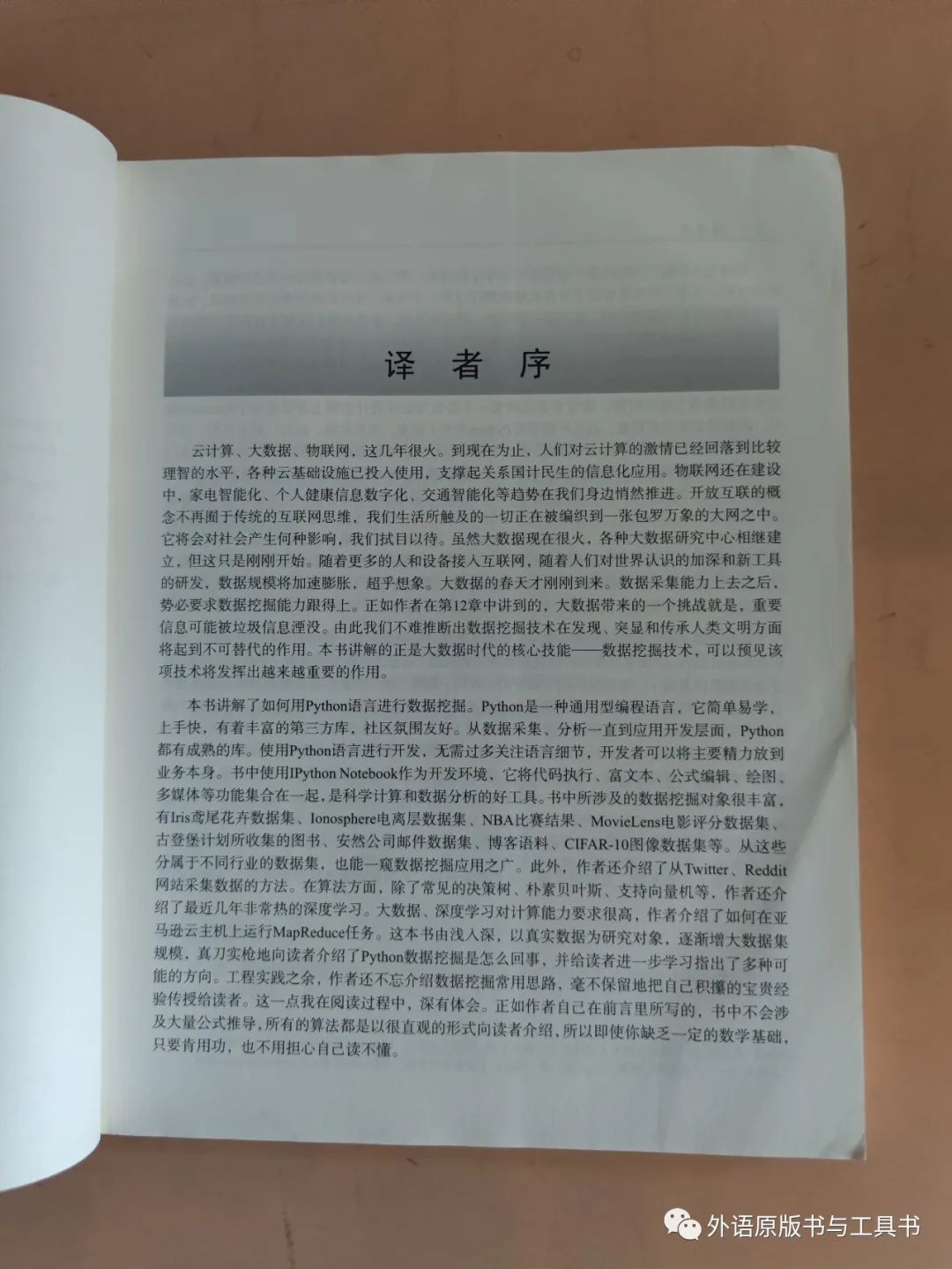
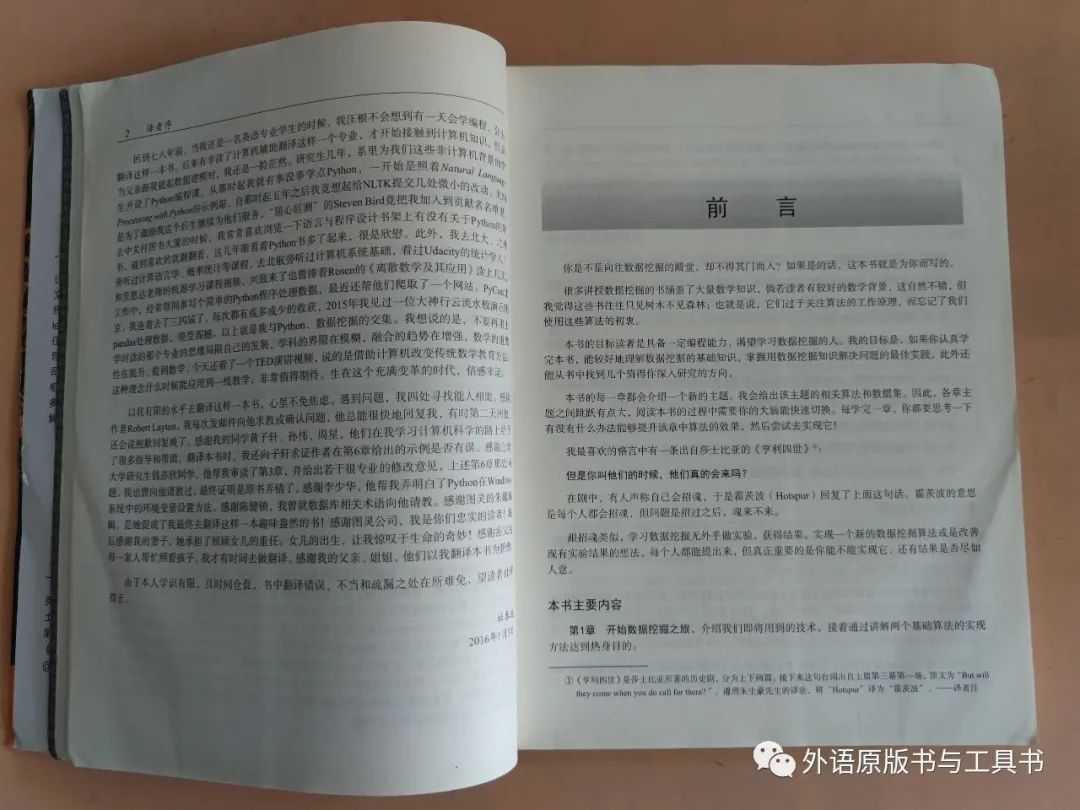
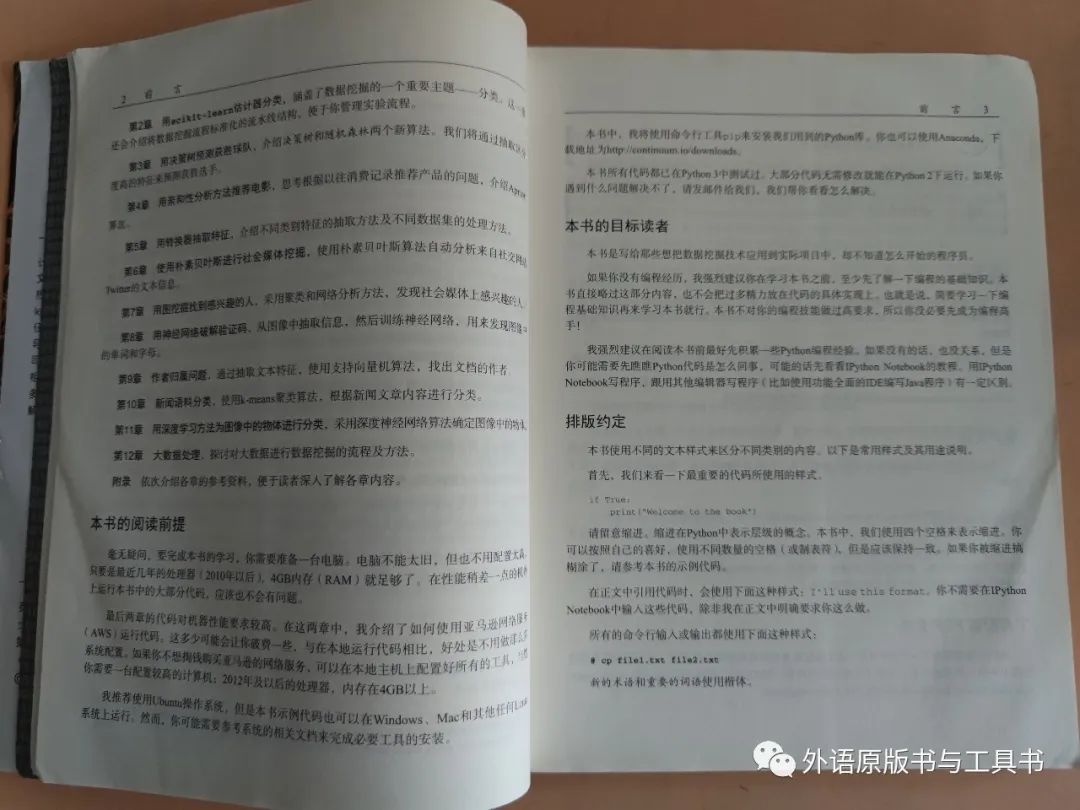
Basic Information
Author :
[ Australia ] Robert Layton ; translated by Du Chunxiao
Publisher : People's Posts and Telecommunications Press
ISBN:
9787115427106
Publication time : 2016-07
Version : 1
Printing time : 2016-11
Impressions : 2
Binding : paperback
Format : 16
Paper : offset paper
Number of pages : 236 pages
Word count : 372 thousand words
Introduction
As an introduction to data mining, this book introduces the basic knowledge, basic tools and practical methods of data mining, and takes you on a journey of data mining by explaining algorithms step by step. Using a combination of theory and practice, this book presents how to use decision trees and * forest algorithms to predict the results of NBA games, how to use affinity analysis to recommend movies, and how to use Naive Bayes for social media mining. ,and many more. The book also covers neural networks, deep learning, big data processing, and more. This book is for programmers willing to learn and experiment with data mining.
Editor's Choice
In the era of big data with rapidly expanding data scale, data mining, the core technology for identifying important data, is playing an increasingly important role. It will give you "superpowers" to solve practical problems: predict the outcome of sports events, place ads, solve author attribution based on the style of the work, and more. This book uses the Python language that is easy to learn and has rich third-party libraries and a good community atmosphere. From the simple to the deep, it takes real data as the research object, and introduces the implementation method of Python data mining to the readers. Through this book, readers will enter the palace of data mining, thoroughly understand the basic knowledge of data mining, and master the outstanding practice of solving practical problems of data mining!
about the author
Robert
Layton , PhD in Computer Science, expert in cybercrime issues and text analysis. He has been keen on Python programming for many years, participated in the development of many open source libraries such as the scikit-learn library, and served as the mentor of the 2014 " Google Summer of Programming " project. He has worked closely with several global data mining companies to mine real data and develop related applications. His company, dataPipeline , provides data mining and data analysis solutions to multiple industries.
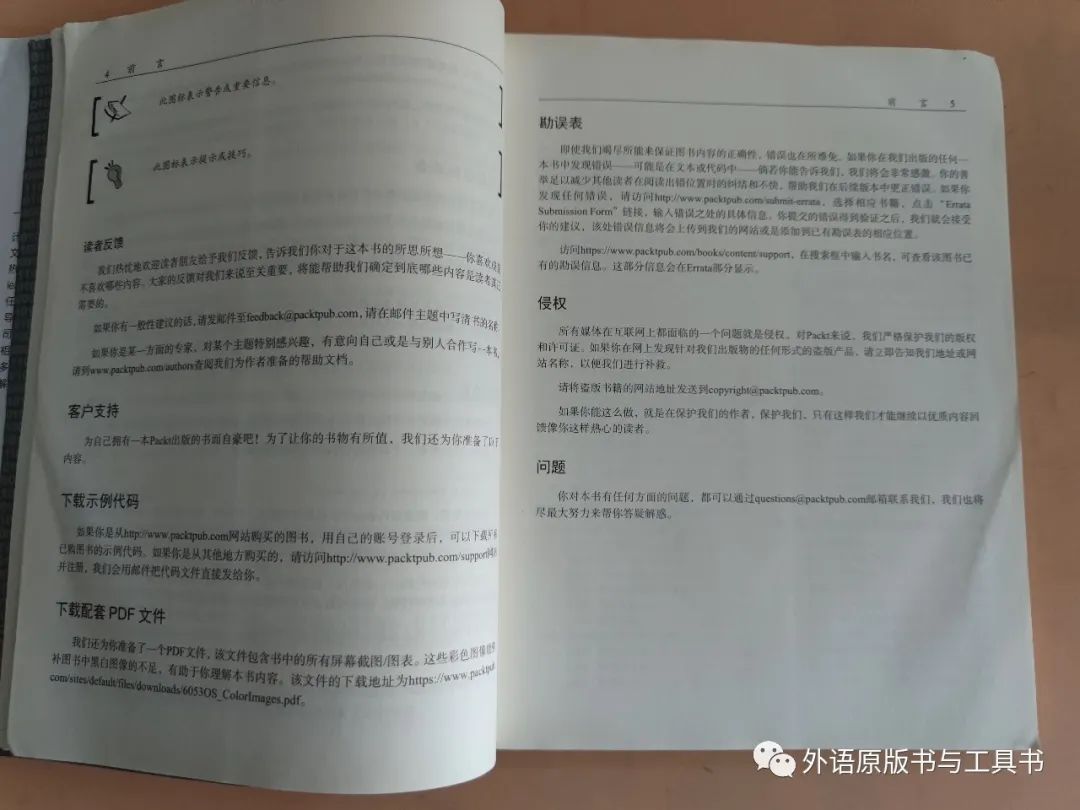
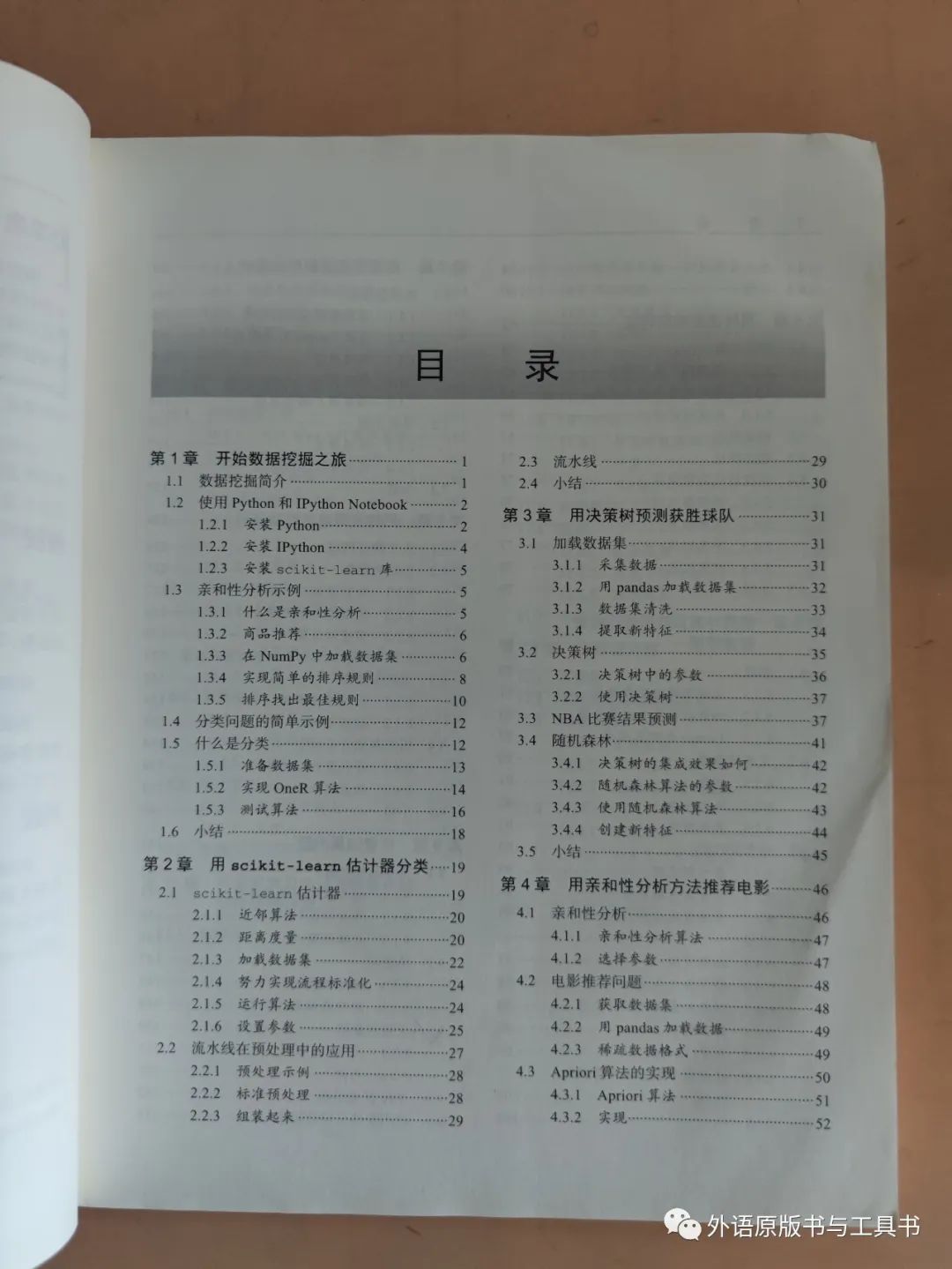

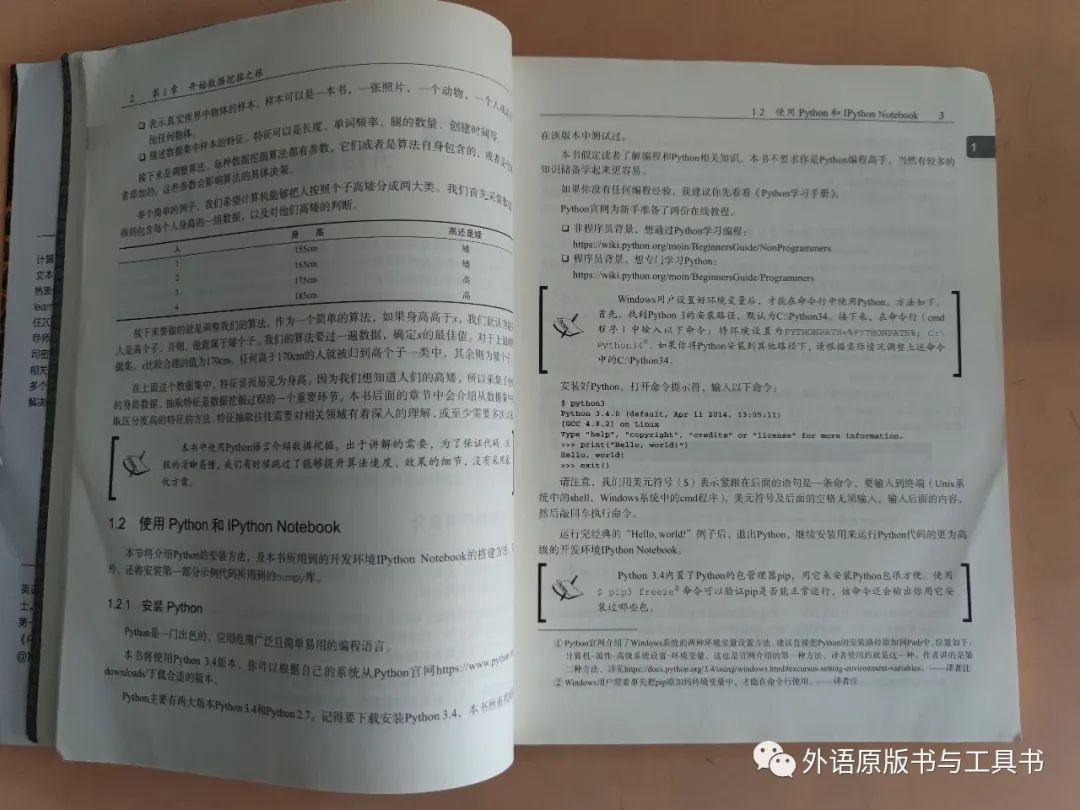
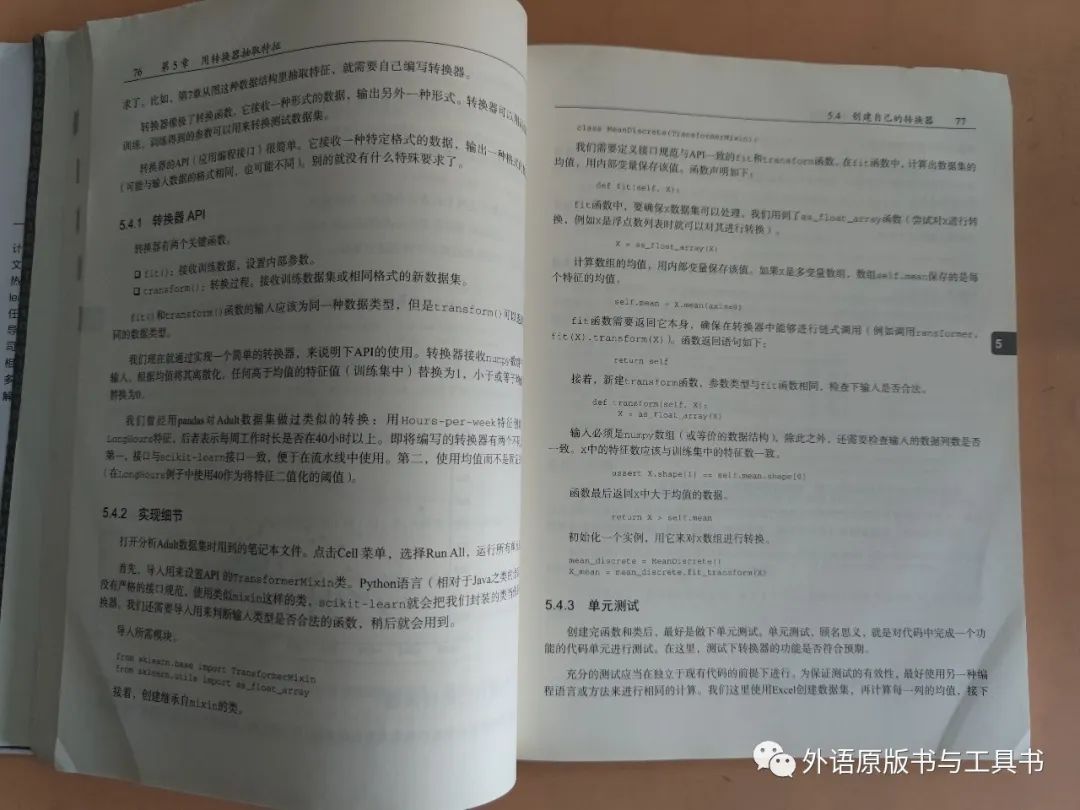
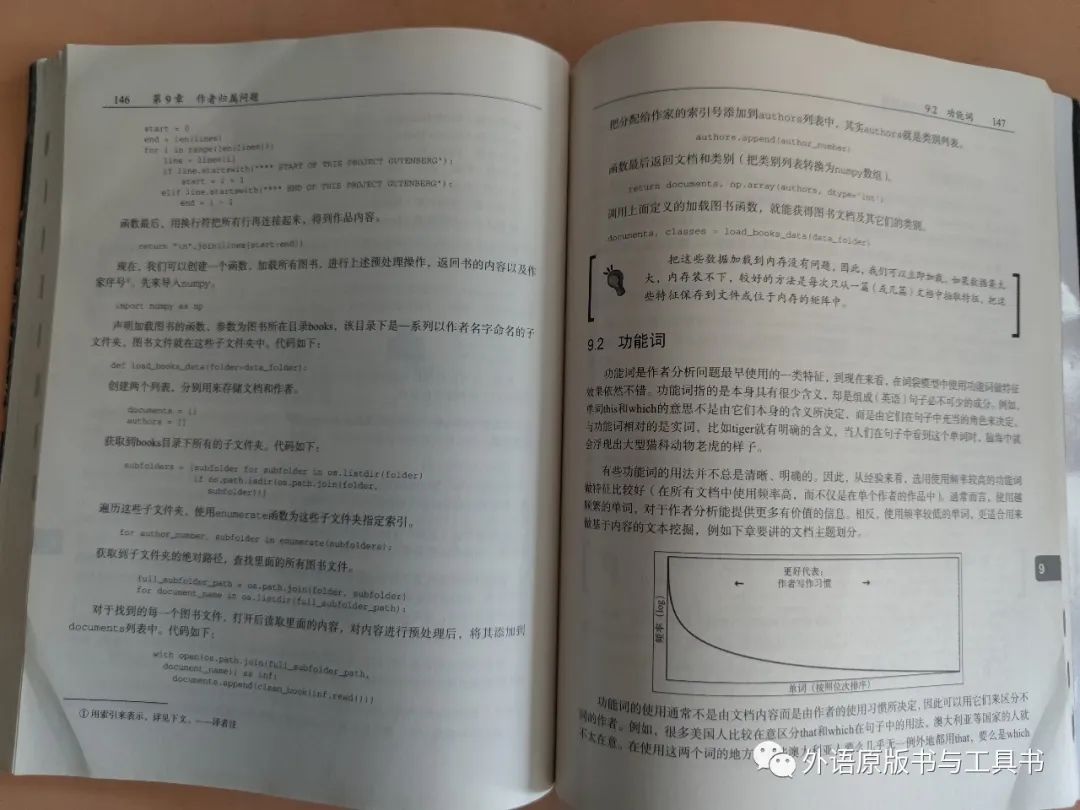
Table of contents
Chapter 1 Begin
Your Data Mining Journey 1
1.1 Introduction to Data Mining 1
1.2 Using Python and IPython
Notebook 2
1.2.1 Install Python 2
1.2.2 Install IPython 4
1.2.3 Install scikit-learn library 5
1.3 Affinity Analysis Example 5
1.3.1 What is Affinity Analysis 5
1.3.2 Product Recommendation 6
1.3.3 Loading datasets in NumPy 6
1.3.4 Implementing Simple Sorting Rules 8
1.3.5 Sorting to find out the rules 10
1.4 A Simple Example of a Classification Problem 12
1.5 What are classifications 12
1.5.1 Preparing the dataset 13
1.5.2 Implementing the OneR algorithm 14
1.5.3 Testing Algorithms 16
1.6 Summary 18
Chapter 2 Classifying
with scikit-learn Estimators 19
2.1 scikit-learn estimators 19
2.1.1 Nearest neighbor algorithm 20
2.1.2 Distance metrics 20
2.1.3 Loading the dataset 22
2.1.4 Efforts to standardize processes 24
2.1.5 Running the Algorithm 24
2.1.6 Setting parameters 25
2.2 The application of pipeline in preprocessing 27
2.2.1 Preprocessing example 28
2.2.2 Standard Preprocessing 28
2.2.3 Assembling 29
2.3 Pipeline 29
2.4 Summary 30
Chapter 3 Using
Decision Trees to Predict Winning Teams 31
3.1 Loading the dataset 31
3.1.1 Collecting data 31
3.1.2 Loading datasets with pandas 32
3.1.3 Dataset Cleaning 33
3.1.4 Extracting new features 34
3.2 Decision Trees 35
3.2.1 Parameters in decision trees 36
3.2.2 Using decision trees 37
3.3 Prediction of NBA game results 37
3.4 Random Forest 41
3.4.1 How effective is the integration of decision trees 42
3.4.2 Parameters of the Random Forest Algorithm 42
3.4.3 Using the Random Forest Algorithm 43
3.4.4 Creating new features 44
3.5 Summary 45
Chapter 4 Recommending Movies
Using Affinity Analysis 46
4.1 亲和性分析 46
4.1.1 亲和性分析算法 47
4.1.2 选择参数 47
4.2 电影推荐问题 48
4.2.1 获取数据集 48
4.2.2 用pandas加载数据 49
4.2.3 稀疏数据格式 49
4.3 Apriori算法的实现 50
4.3.1 Apriori算法 51
4.3.2 实现 52
4.4 抽取关联规则 54
4.5 小结 60
第5章
用转换器抽取特征 62
5.1 特征抽取 62
5.1.1 在模型中表示事实 62
5.1.2 通用的特征创建模式 64
5.1.3 创建好的特征 66
5.2 特征选择 67
5.3 创建特征 71
5.4 创建自己的转换器 75
5.4.1 转换器API 76
5.4.2 实现细节 76
5.4.3 单元测试 77
5.4.4 组装起来 79
5.5 小结 79
第6章
使用朴素贝叶斯进行社会媒体挖掘 80
6.1 消歧 80
6.1.1 从社交网站下载数据 81
6.1.2 加载数据集并对其分类 83
6.1.3 Twitter数据集重建 87
6.2 文本转换器 90
6.2.1 词袋 91
6.2.2 N元语法 92
6.2.3 其他特征 93
6.3 朴素贝叶斯 93
6.3.1 贝叶斯定理 93
6.3.2 朴素贝叶斯算法 94
6.3.3 算法应用示例 95
6.4 应用 96
6.4.1 抽取特征 97
6.4.2 将字典转换为矩阵 98
6.4.3 训练朴素贝叶斯分类器 98
6.4.4 组装起来 98
6.4.5 用F1值评估 99
6.4.6 从模型中获取更多有用的特征 100
6.5 小结 102
第7章
用图挖掘找到感兴趣的人 104
7.1 加载数据集 104
7.1.1 用现有模型进行分类 106
7.1.2 获取Twitter好友信息 107
7.1.3 构建网络 110
7.1.4 创建图 112
7.1.5 创建用户相似度图 114
7.2 寻找子图 117
7.2.1 连通分支 117
7.2.2 优化参数选取准则 119
7.3 小结 123
第8章
用神经网络破解验证码 124
8.1 人工神经网络 124
8.2 创建数据集 127
8.2.1 绘制验证码 127
8.2.2 将图像切分为单个的字母 129
8.2.3 创建训练集 130
8.2.4 根据抽取方法调整训练数据集 131
8.3 训练和分类 132
8.3.1 反向传播算法 134
8.3.2 预测单词 135
8.4 用词典提升正确率 138
8.4.1 寻找相似的单词 138
8.4.2 组装起来 139
8.5 小结 140
第9章
作者归属问题 142
9.1 为作品找作者 142
9.1.1 相关应用和使用场景 143
9.1.2 作者归属 143
9.1.3 获取数据 144
9.2 功能词 147
9.2.1 统计功能词 148
9.2.2 用功能词进行分类 149
9.3 支持向量机 150
9.3.1 用SVM分类 151
9.3.2 内核 151
9.4 字符N元语法 152
9.5 使用安然公司数据集 153
9.5.1 获取安然数据集 153
9.5.2 创建数据集加载工具 154
9.5.3 组装起来 158
9.5.4 评估 158
9.6 小结 160
第10章
新闻语料分类 161
10.1 获取新闻文章 161
10.1.1 使用Web API获取数据 162
10.1.2 数据资源宝库reddit 164
10.1.3 获取数据 165
10.2 从任意网站抽取文本 167
10.2.1 寻找任意网站网页中的主要内容 167
10.2.2 组装起来 168
10.3 新闻语料聚类 170
10.3.1 k-means算法 171
10.3.2 评估结果 173
10.3.3 从簇中抽取主题信息 175
10.3.4 用聚类算法做转换器 175
10.4 聚类融合 176
10.4.1 证据累积 176
10.4.2 工作原理 179
10.4.3 实现 180
10.5 线上学习 181
10.5.1 线上学习简介 181
10.5.2 实现 182
10.6 小结 184
第11章
用深度学习方法为图像中的物体进行分类 185
11.1 物体分类 185
11.2 应用场景和目标 185
11.3 深度神经网络 189
11.3.1 直观感受 189
11.3.2 实现 189
11.3.3 Theano简介 190
11.3.4 Lasagne简介 191
11.3.5 用nolearn实现神经网络 194
11.4 GPU优化 197
11.4.1 什么时候使用GPU进行
计算 198
11.4.2 用GPU运行代码 198
11.5 环境搭建 199
11.6 应用 201
11.6.1 获取数据 201
11.6.2 创建神经网络 202
11.6.3 组装起来 204
11.7 小结 205
第12章
大数据处理 206
12.1 大数据 206
12.2 大数据应用场景和目标 207
12.3 MapReduce 208
12.3.1 直观理解 209
12.3.2 单词统计示例 210
12.3.3 Hadoop MapReduce 212
12.4 应用 212
12.4.1 获取数据 213
12.4.2 朴素贝叶斯预测 215
12.5 小结 226
附录 接下来的方向 227